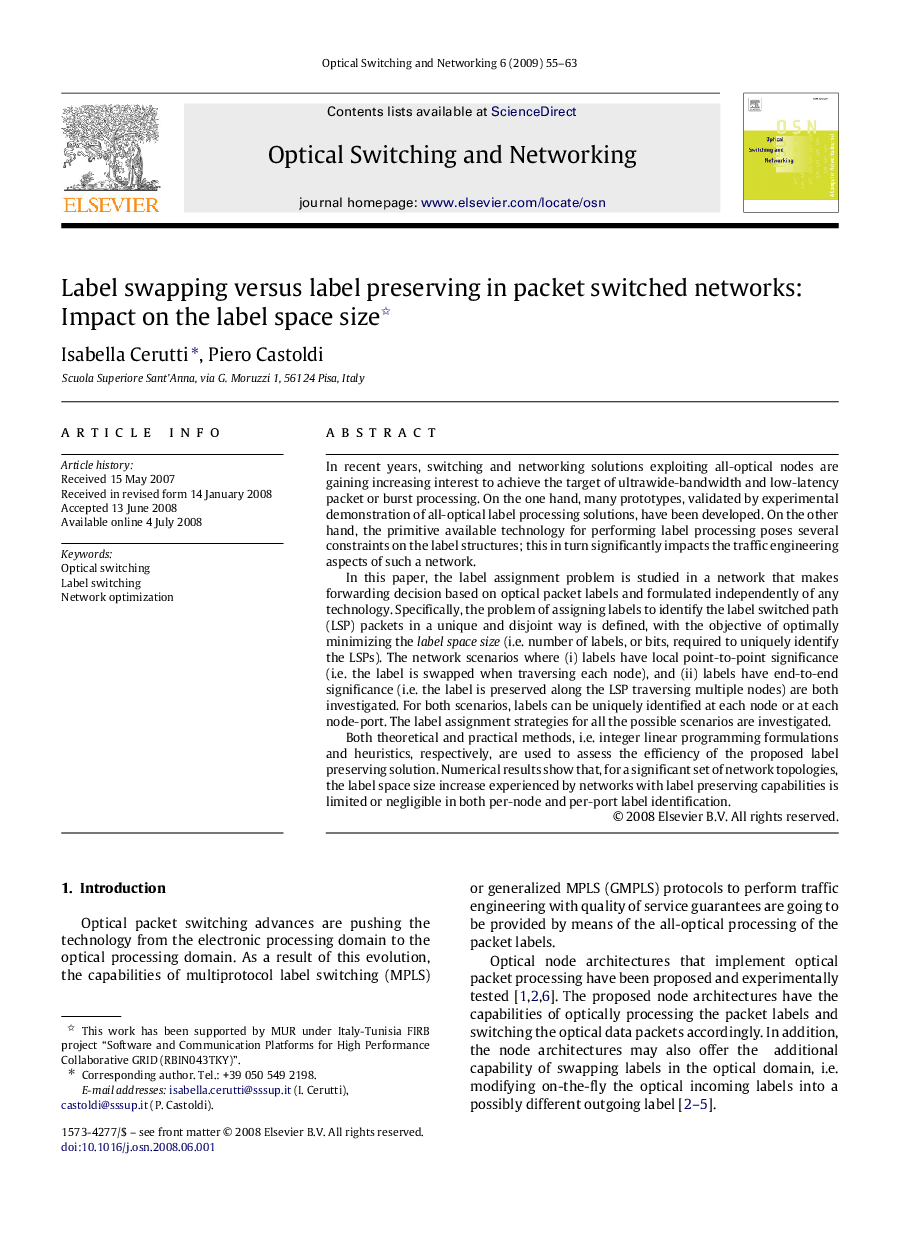| Article ID | Journal | Published Year | Pages | File Type |
|---|---|---|---|---|
| 464715 | Optical Switching and Networking | 2009 | 9 Pages |
In recent years, switching and networking solutions exploiting all-optical nodes are gaining increasing interest to achieve the target of ultrawide-bandwidth and low-latency packet or burst processing. On the one hand, many prototypes, validated by experimental demonstration of all-optical label processing solutions, have been developed. On the other hand, the primitive available technology for performing label processing poses several constraints on the label structures; this in turn significantly impacts the traffic engineering aspects of such a network.In this paper, the label assignment problem is studied in a network that makes forwarding decision based on optical packet labels and formulated independently of any technology. Specifically, the problem of assigning labels to identify the label switched path (LSP) packets in a unique and disjoint way is defined, with the objective of optimally minimizing the label space size (i.e. number of labels, or bits, required to uniquely identify the LSPs). The network scenarios where (i) labels have local point-to-point significance (i.e. the label is swapped when traversing each node), and (ii) labels have end-to-end significance (i.e. the label is preserved along the LSP traversing multiple nodes) are both investigated. For both scenarios, labels can be uniquely identified at each node or at each node-port. The label assignment strategies for all the possible scenarios are investigated.Both theoretical and practical methods, i.e. integer linear programming formulations and heuristics, respectively, are used to assess the efficiency of the proposed label preserving solution. Numerical results show that, for a significant set of network topologies, the label space size increase experienced by networks with label preserving capabilities is limited or negligible in both per-node and per-port label identification.
